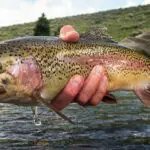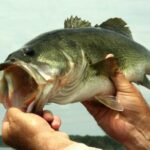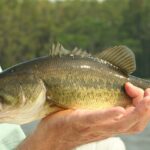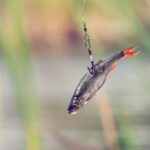If you are a beginner, it is important to know the size of your fishing hook before buying them. There are many different sizes available and each one has its purpose.
For instance, if you are using a worm as bait, then you need a smaller hook than if you were going for larger fish like bass or trout.
As the average angler, you are most likely to use some of the standard hook sizes to catch the most common species.
In this guide, we put together the basic hook sizes and how to choose the right one for your situation.
Different Fishing Hook Sizes
Fishing hooks are used to catch fish and other aquatic animals. They come in different sizes, shapes, materials, colors, etc.
The size of the hook is determined by its length. A longer hook will be able to hold more bait or attract bigger fish.
Hook sizes start from 32 to 1 where 31 is the smallest hook and 1 is the largest.
There is also another system in place which describes hook sizes from 1/0 to 19/0. Here the smallest number is the smallest hook.
The majority of fishing hook manufacturers produce hooks in this range. While smaller and larger hooks are manufactured, they are not commonly used for hobby anglers.
It’s important to know that in these two systems, the hook marked as the same size, may not be the same hook size.
For example, a circle hook size 1 is not the same size as a jig hook 1.
In addition, hook sizes can also vary depending on the manufacturer. Although these different sizes are useful, they are not standardized.
For this reason, some anglers only buy hooks from certain manufacturers where they already know the hook size.
Easy Chart Of Fishing Hook Sizes
Above we already mentioned some of the most common fishing hook sizes for common fish species.
Here is a handy chart to quickly find out what hook size you need to catch what fish.
| Fish Species | Minimum Size | Maximum Size |
| Trout | 30 (for tiny flies) | 4 (jigs) |
| Bass | 4 | 6/0 |
| Carp | 8 | 3/0 |
| Bluegill | 12 | 6 |
| Walleye | 6 | 1/0 |
| Perch | 14 | 2 |
| Catfish | 1/0 | 8/0 |
| Pike | 8 | 3/0 |
| Salmon | 12 (salmon flies) | 3/0 |
| Sea Bream | 8 | 1 |
| Sea Bass | 1/0 | 5/0 |
| Tuna | 2 (for small Albacore tuna) | 12/0 (for large Atlantic Bluefin) |
| Sharks | 1/0 (for small Angel Shark) | 19/0 (for large Hammerheads, etc.) |
| Bluefish | 1 | 6/0 |
| Red Snapper | 3/0 | 8/0 |
| Blue Marlin | 8/0 | 14/0 |
Different Types Of Fishing Hooks
In addition to the different size hooks available, there are also many different types of fishing hooks suitable for a range of fish species.
Below are some of the most commonly used types of fishing hooks.
Spinning Hooks
These are usually made from metal wire with a sharp point at one end. They can be used for catching small fish like minnows, perch, crappie, catfish, etc.
Jigging Hooks
Jigging hooks are usually designed to be attached to a jig head (a weighted lure). They are often used for catching larger fish such as bass, bluegill, sunfish, carp, etc.
Drop-Shot Hooks
These hooks are typically used when fishing for large fish such as muskellunge, walleye, pike, etc.
Weedless Hooks
Weedless hooks are very long, thin, flexible hooks that are designed to go through weeds without snagging them.
Snagless Hooks
These hooks are similar to weedless hooks but they have a bend on them so they don’t snag easily.
Flatshot Hooks
As the name suggests, flatshot hooks are flat rather than curved, making it easier to hit smaller fish.
Flathead Hooks
Flathead hooks are used primarily for catching trout.
How Fishing Hook Size Is Determined
To determine the correct hook size, you must first understand how the hook is measured.
A hook is measured by its length. The length of a hook is determined by measuring the distance between the eyelet and the tip of the hook.
This measurement is then divided into four parts. Each part represents a quarter inch.
For example, a hook size 9/0 (a large hook) has an overall length of 3 inches, plus a gap of 1.1 inches.
In comparison, the smaller size 8 hook has a full length of 0.7 inches, with a gap of 0.2 inches.
Don’t worry when this looks very complex. Many manufacturers provide fishing hook charts that show you the different hook sizes suitable for what you need.
We already mentioned that these sizes can vary, which isn’t too much when you use a larger hook. However, for smaller hooks, a difference of 0.1 inches can be significant.
How To Decide What Hook Size To Use?
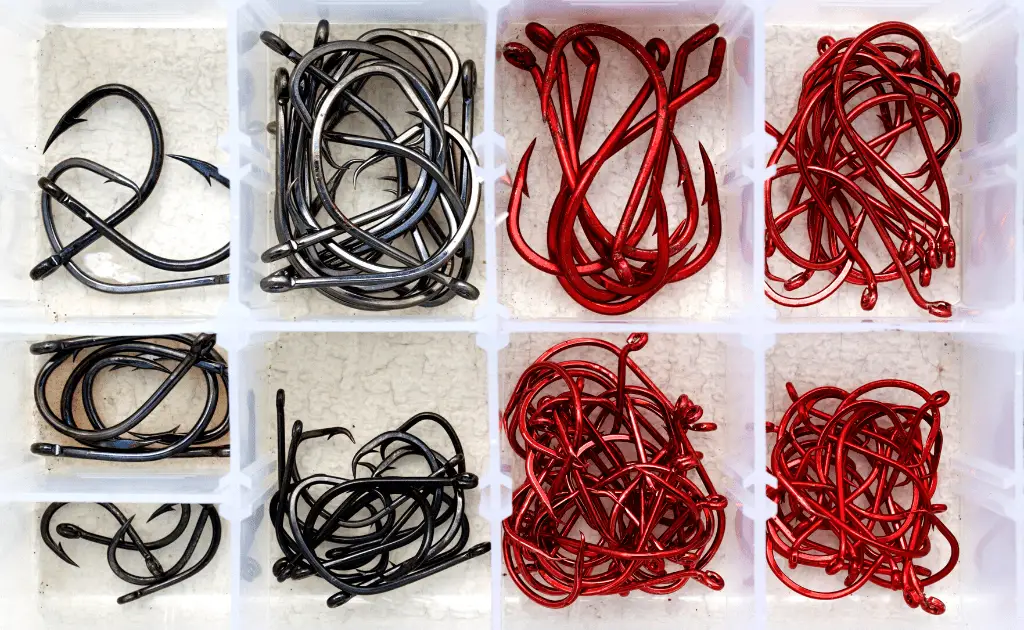
The first thing you need to decide before picking a hook size is what kind of fish you want to catch.
If you’re going after a specific type of fish then you’ll need to use a particular type of hook.
For example, if you’re trying to catch largemouth bass then you should probably use a drop shot hook.
If you’re trying to catch salmon then you might want to consider using a spinning hook.
If you’re just looking to catch anything then you could use a regular old fishing hook. You may even find that some of these hooks work better than others depending on the type of fish you want to target.
If you’re new to fishing then it’s best to start with a basic set of hooks.
This way you won’t waste time and money buying all sorts of expensive equipment only to realize later that you didn’t know how to use it.
You can always buy additional hooks as your skills improve.
Factors That Influence The Fishing Hook Size
In addition to the type of fish you want to catch, there is a whole array of factors that can influence what size hook you want to use:
Size And Weight Of Fish
The size and weight of the fish can have a big impact on the size hook you need to use. If your hook is too small for the fish you catch, then it’ll bend or snap.
Fishing Location
This largely also depends on the type of fish living in the water where you want to fish.
Using Bait
If you are using bait, you’ll have to ensure you need to use the right size hook to fit your bait on.
Your Budget
As with a lot of fishing gear, you can spend a lot of money on many different hook sizes. We recommend trying out some of the main, standard hooks first.
Your Experience Level
As the different hook sizes depend on the different types of fish you want to catch, you will need some experience with particular hooks.
What Is The Smallest Hook Size?
While there are very small and large hook sizes, these are usually used for more special types of fish and are rarely used.
When choosing the smallest hook size, you should think about how much bait you plan to use. For example, if you plan to use 1/16 oz. of bait, then you should choose a 3/0 hook. However, if you plan to put out 2/0 or 5/0 bait, then you should use a 4/0 hook.
We would recommend not knowing the smallest hooks as a beginner because they can be difficult to control and just tying such a small size hook can be extremely difficult.
The smallest sizes are most commonly used in fly fishing but if you are not an experienced fly fisherman, then you would normally only start with a hook size 14/0 or 16/0 (suitable for trout).
What Is The Biggest Fishing Hook Size?
The biggest fishing hook size depends on the size of the fish you plan to catch. For example, if your target fish is small, then you might want to use a 6/0 hook. However, if your target fish is medium-sized, then you should use an 8/0 hook.
For a really large catch, you’ll need to use a hook size 19/0. Sometimes people even use hook size 20/0 but that’s mainly for offshore fishing, e.g. catching large sharks.
These large hooks are super sturdy and can withstand a lot of impact from a large size fish.
The bigger the hook, the more likely you are to get hooked by something else. So, make sure you know exactly what kind of fish you plan to catch before you decide which hook size to use.
You can also choose a larger hook size if you plan to fish with a spinning rod. In this case, you don’t need to worry about losing the lure. Also, you can use a spinner when fishing near the shore because it’s easier to retrieve the lure.
Another reason why you might want to use large hooks is if you plan to catch some very large fish. Using large hooks allows you to catch these fish without getting hurt.
Finally, you can use a drop shot rig if you plan to fish in deep waters. A drop shot rig works best when you’re far from shore. It lets you cast farther than other rigs. Also, it lets you cast longer distances.
Frequently Asked Questions
How Can I Prevent Getting Hooked By Something Else?
To prevent yourself from getting hooked by something else, you can always wear gloves. This way, you will avoid touching anything else while you are fishing.
Can I Use More Than One Fishing Hook?
Yes, you can use multiple fishing hooks. However, we do not recommend doing so unless you are an expert at fishing.
Using more than one hook increases the risk of getting caught. Also, it makes it harder to land the fish.
Do Fish Die After Being Hooked?
It depends on the species of fish you’re trying to catch. Some fish die after being hooked. Others survive.
However, if you have a big fish, then you may want to release it immediately.
How Long Does It Take To Get Hooked?
It takes anywhere between 10 seconds and 30 minutes for a fish to get hooked.
If you’re using a light line, then you would probably take less time to get hooked. On the other hand, if you’re using heavy lines, then you would probably need a little bit more time to get hooked.
Conclusion
There are many different reasons why you might want to buy fishing hooks. You could be planning to go fishing soon, or, if you are a beginner, you may want to learn more about fishing and how to catch a certain fish species.
Whatever the reason is, there are plenty of options available.
We hope our guide has helped you understand all the different types of fishing hooks available and how to choose the right size for the type of fish you want to catch.
- Do You Need An Indicator For Nymph Fishing? - November 16, 2023
- Fishing Safety Tips For Families - September 25, 2023
- What Is The Best Time To Night Fish At A Lake? - September 18, 2023




